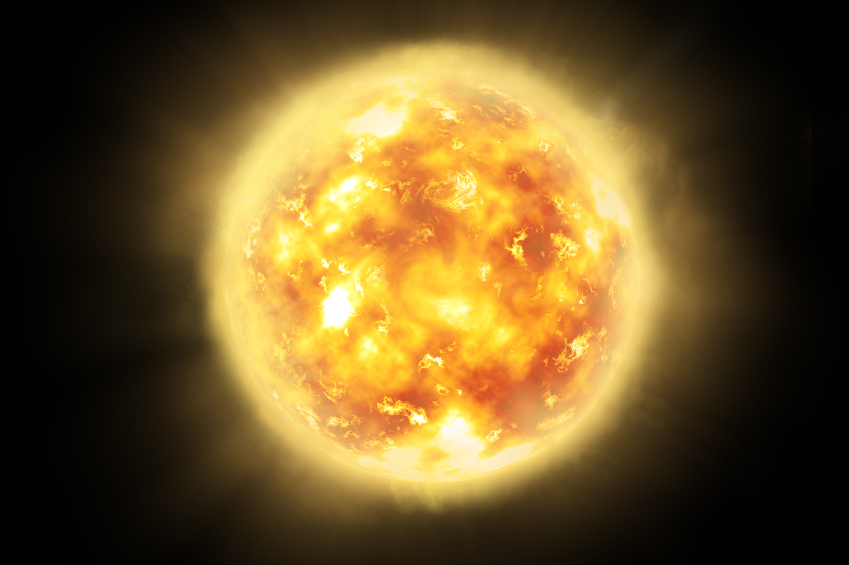
February has been a heavy month of solar activity so far, with the solar system's star discharging two massive explosions from its far side (facing away from Earth).
A brilliant coronal mass ejection (CME) that extended millions of miles into space was reported by the STEREO-A spacecraft of the National Aeronautics and Space Administration (NASA) in the early hours of Feb. 15.
The largest solar prominence eruption ever seen in a single image together with the full solar disc was captured by the Full Sun Imager of the Extreme Ultraviolet Imager on the NASA/ESA (European Space Agency) Solar Orbiter spacecraft.
Coronal mass ejection causes geomagnetic storm
CMEs are colossal eruptions that send plasma hurtling through space, and the sun has sustained a lot of them throughout the month.
These plumes of material can bring about geomagnetic storms that could knock out satellites and disrupt power grids if they hit Earth.
Astronomer Dr. Tony Phillips said the latest CME was fired from the side of the sun that faces away from Earth, thus posing no danger to the planet.
"This CME will not hit Earth; it is moving away from, not toward our planet. However, if such a CME did strike, it could produce a very strong geomagnetic storm. We may have dodged a bullet," Phillips wrote on his website spaceweather.com, which tracks the activity of the sun.
It is likely that the eruption was an X-class flare, the most powerful category available, based on its size.
"This is only the second far-side active region of this size since September 2017. If this region remains huge as it rotates to the Earth-facing side of the sun, it could give us some exciting flares," astronomer Junwei Zhao of Stanford University's helioseismology group told SpaceWeather.
Phillips said it has been a busy month of solar activity for the sun, which has erupted every day for the month of February with some days showing multiple solar flares.
Three of these flares have fallen into the M-class, the second-most powerful flare category. The month of January saw the sun firing up five M-class flares.
On January 29, an M-Class flare led to a solar storm that put 40 SpaceX satellites out of operation. The other flares in February have dipped into the milder C-class category.
Solar storms, flares are part of the sun's normal activity
Although it sounds frightening, there's no need to panic since it's all part of the sun's normal activity. Astronomers are keeping a close eye on the sun's activity to ensure there is enough warning before any potential geomagnetic storm hits Earth. (Related: Earth will only have a 12-hour warning before massive solar storm wipes out grid - are you prepared?)
CMEs, which are huge expulsions of hot material called plasma from the sun's outer layer, can cause geomagnetic storms.
Geomagnetic storms can spur the appearance of colorful auroras by energizing particles in our planet's atmosphere. Every solar storm is classified by severity on a scale of one to five, with a G1 reported as "minor" and a G5 as "extreme" in its grading scale.
At the upper end of the scale, storms can unleash chaos on Earth's magnetic field, which can rattle power grids and communications networks.
"Harmful radiation from a flare cannot pass through Earth’s atmosphere to physically affect humans on the ground. However – when intense enough – they can disturb the atmosphere in the layer where GPS and communications signals travel," NASA said.
In the past, huge solar flares have caused disruption to Earth. A strong solar eruption in 1989 fired so many electrically charged particles on the planet that the Canadian Province of Quebec lost power for nine hours.
Aside from causing tech issues, a solar storm can cause harm to astronauts working on the International Space Station through radiation exposure and by interfering with mission control communications.
The sun is presently at the outset of a new 11-year solar cycle, which usually features eruptions and flares that grow more intense and extreme. This solar cycle is based on the sun's magnetic field, which spins around every 11 years with its north and south magnetic poles swapping places. These events are expected to reach their peak around 2025.
More related stories:
Solar telescope offers unprecedented glimpse into the sun.
Discovery: The sun's magnetic waves react to sound.
Astronomers find 1,000 mysterious filaments of radio energy blasting from center of Milky Way.
GPS-dependent America is one solar storm away from collapse.
Watch the video below to know how the sun's solar activities can affect us.
This video is from the Roots Restored Wellness channel on Brighteon.com.
Follow Space.news for more news about the sun and the Solar System.
Sources include:
Please contact us for more information.























